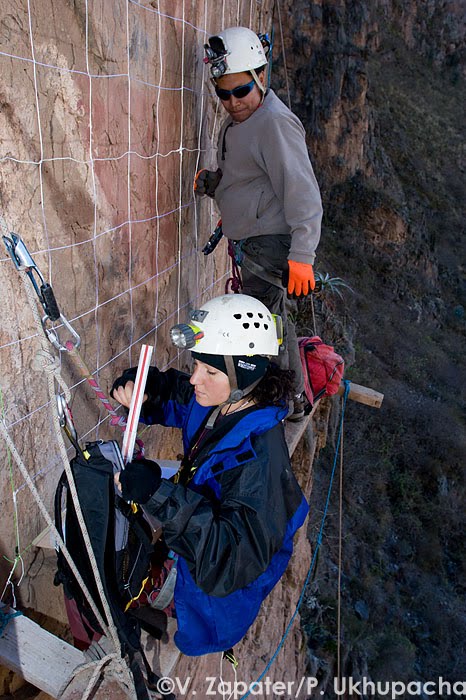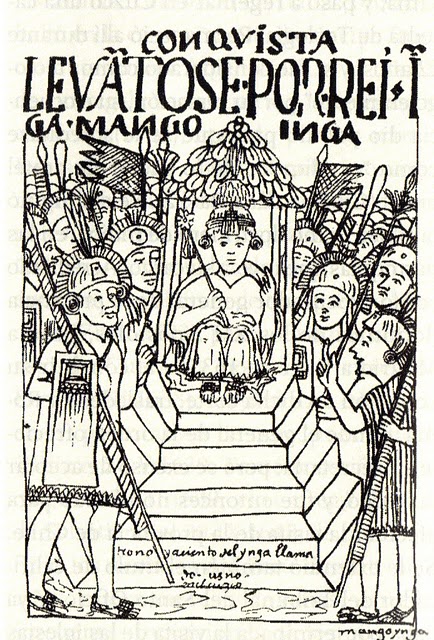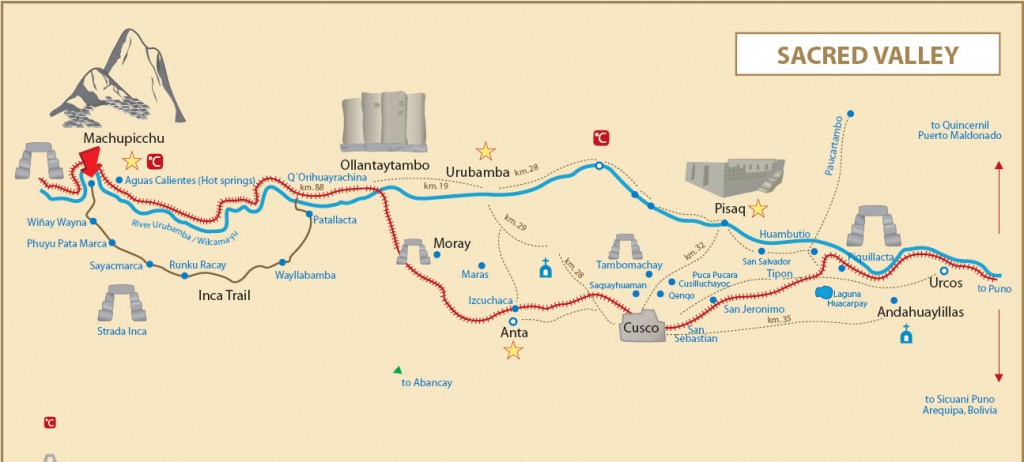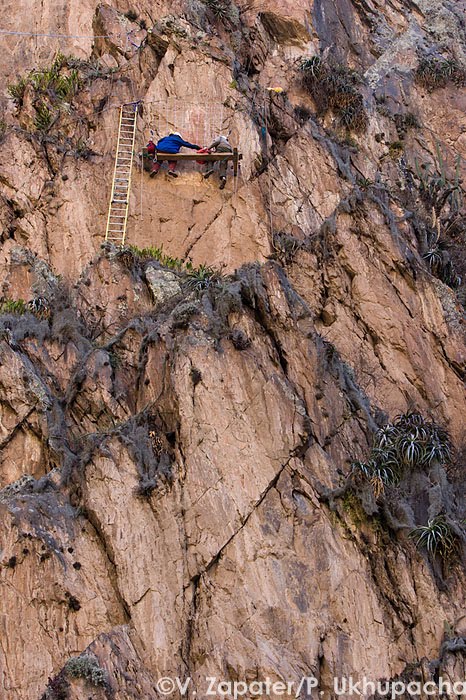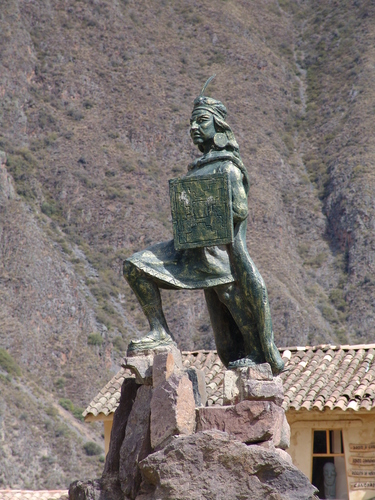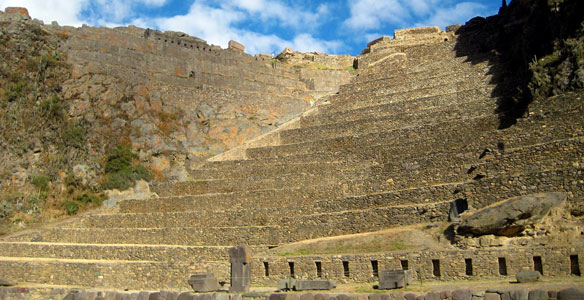Spanish-Peruvian Explorers Reach Cliff With Image of Incan Rebel King
posted on October 21st, 2009 in Archaeology, Incas, Recent Discoveries
Ukupacha Project Investigators Study Portrait of the Rebel Incan Emperor Manco Inca
Spanish-Peruvian Team Succeed in Reaching Rock Art Wall of [Emperor] Manco Inca II
The painting was completed over 400 years ago on a cliff in the Sacred Valley of the Incas
August 9, 2009
(ANDINA)
(Translation: K. MacQuarrie)
(Note: in 1536, a 19-year-old Incan emperor named Manco Inca rose up against the Spaniards and led a massive rebellion that almost succeeded in wiping Francisco Pizarro and his conquistadors out. The young Inca king later retreated to the rugged area of Vilcabamba, about 90 miles from Cusco, a region from where the Incas carried out guerrilla warfare against the Spaniards for the next 36 years. The last Incan emperor, Tupac Amaru, was beheaded in Cusco in 1572, ending the Inca Empire: KM).
Thanks to the climbing techniques of a Peruvian-Spanish team of archaeologists and spelunkers from the Jayme I University of Castellón [in Spain], and the Incapintay Project [in Peru], the team succeeded in reaching one of the most important Inca rock art paintings [that exist], preserved for four centuries on a rugged cliff face in the Sacred Valley of the Incas.
[The mural] depicts the face of Manco Inca II, or Manco Inca Yupanqui, one of the last monarchs of [the Incan Empire called] Tahuantinsuyo and the son of the Emperor Huayna Capac, who for more than 15 years wore the Mascaypacha [or royal crown].
Manco Inca also fought against the Spanish conquistadors from the [nearby] region of Vilcabamba, the last stronghold of [Inca] resistance, where the Incas ruled until the year 1572, three decades after the arrival of [Francisco] Pizarro’s followers.
Salvador Guinot, of the Ukhupacha Collective, explained that the mural of Manco Inca’s visage is located exactly on the sacred mountain bluff, or Apu Pinkuylluna, at the entrance of the town of Ollantaytambo [about 30 miles from Machu Picchu].
Ollantaytambo is considered to be one of the last living Inca cities and is located in the Sacred Valley of the province of Urubamba, about a half hour by car from the city of Cusco
Map of the Sacred Valley of Peru with Inca city of Ollantaytambo and Machu Picchu
Guinot explained that the important mural was already known about historically and in the [historical] literature, but was little known or studied because of the difficulty of accessing its location on a dangerous cliff.
He stressed that only now, thanks to modern climbing techniques, are they able to reach the rock painting so that it can be studied and recorded in detail.
Meanwhile, the Peruvian archaeologist Victor Falcon Huayta, from the Incapintay Project, said they would now discover and collect the necessary data on the types of pigments used in [the mural’s] construction, as well as the sequence of its execution and its most notable stylistic features.
In a similar manner, they will be able to establish the mural’s exact condition for [later] protective measures, which [Peru’s] National Institute of Cultural (INC) must implement, since the mural is in danger of disappearing completely because of its exposure to weathering.
The cliff face where the Inca portrait of Manco Inca was discovered
Falcon Huayta said the mural was painted during the War of the Spanish Conquest in the 1530s, during which the [Inca] monarch Manco Inca began the so-called “war of resistance” against the Spanish conquest.
Historical records state that the Inca king and his army were entrenched for a few months at the fortress and temple of Ollantaytambo, where Manco Inca won several battles and skirmishes against the forces of Francisco Pizarro.
A statue of the rebel emperor Manco Inca in Ollantaytambo’s town square
Falcon Huayta said [the 16th century Peruvian chronicler] Guaman Poma de Ayala mentioned the mural in his chronicles. “And he commanded that they portray Manco Inca and his weapons on a very large cliff as a memorial.” (Guaman Poma, 1615).
The archaeologist also stated that the mural is described in other books and research such as a sketch of the entrance to Ollantaytambo, conducted in 1844 by the German artist Rugendas.
In a similar manner, the mural is mentioned by the Austrian researcher R. Hostnig in an inventory of Peruvian rock art (2003) as well as in a study of Incan rock art in the region of Cusco in 2008.
The work was done in coordination with [Peru’s] National Institute of Culture.

